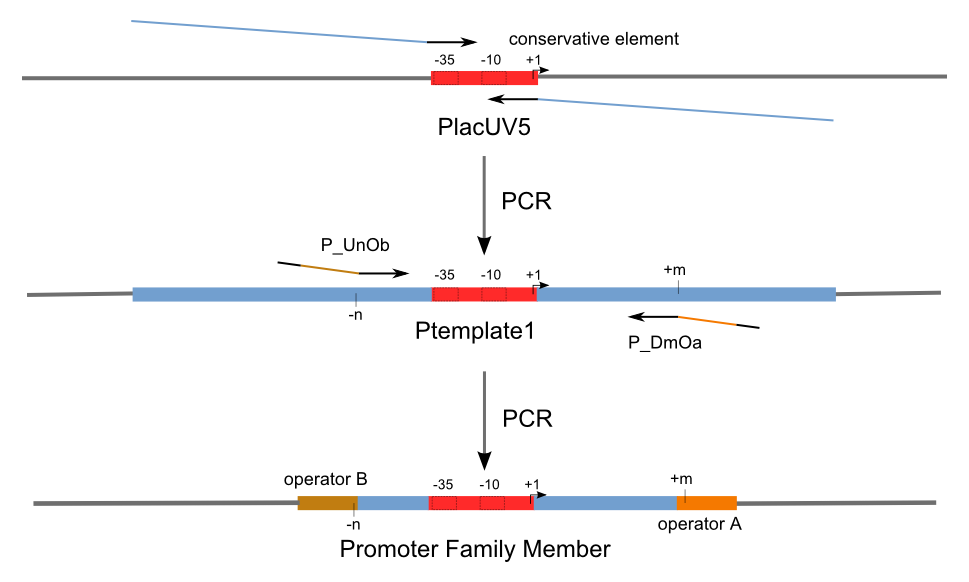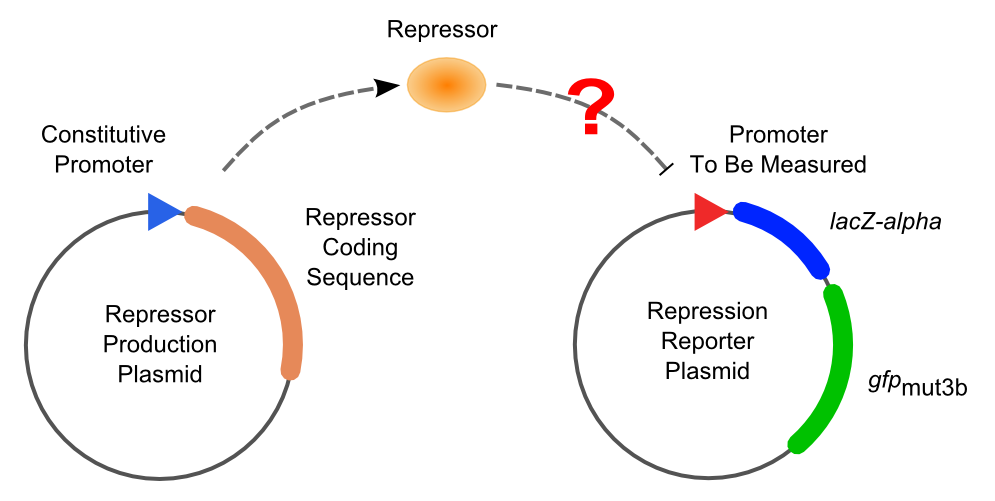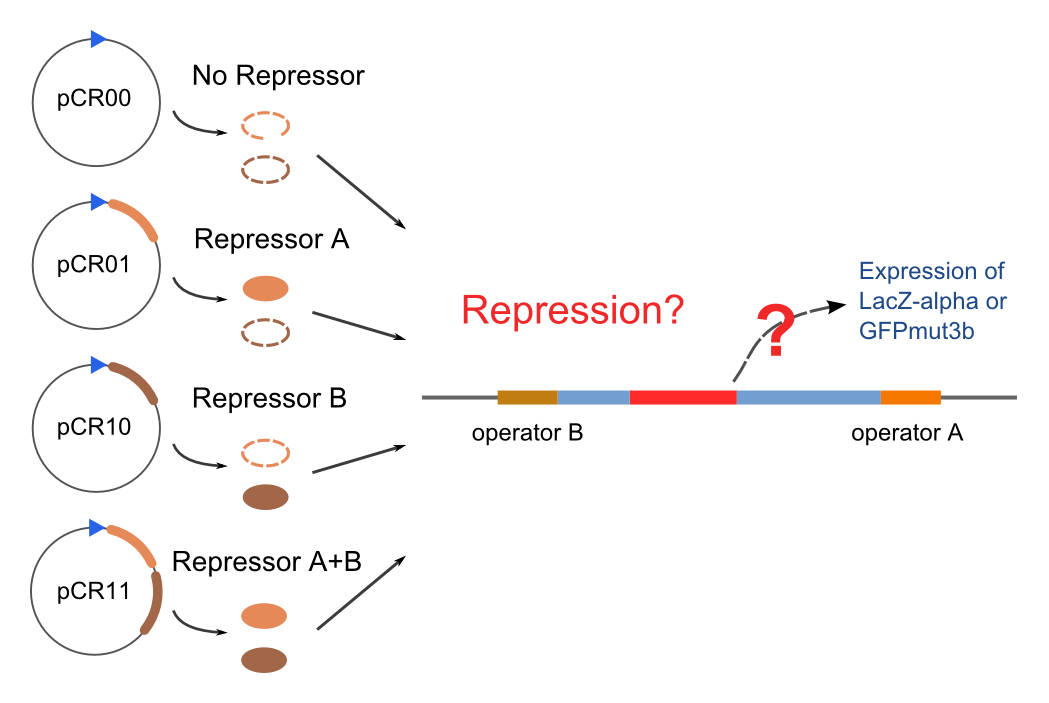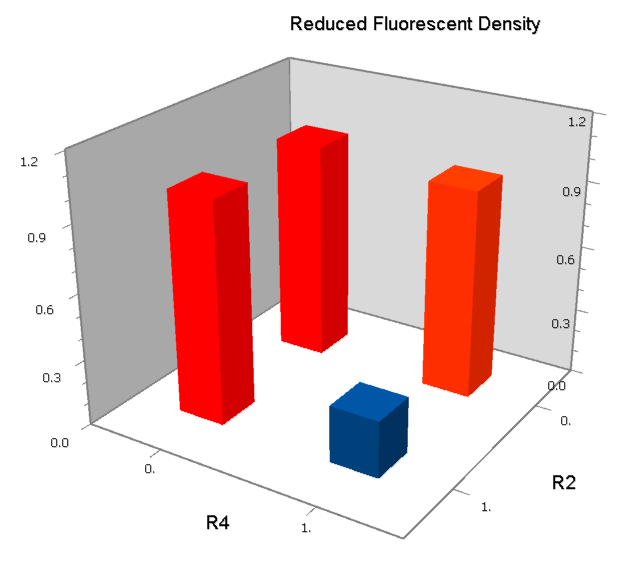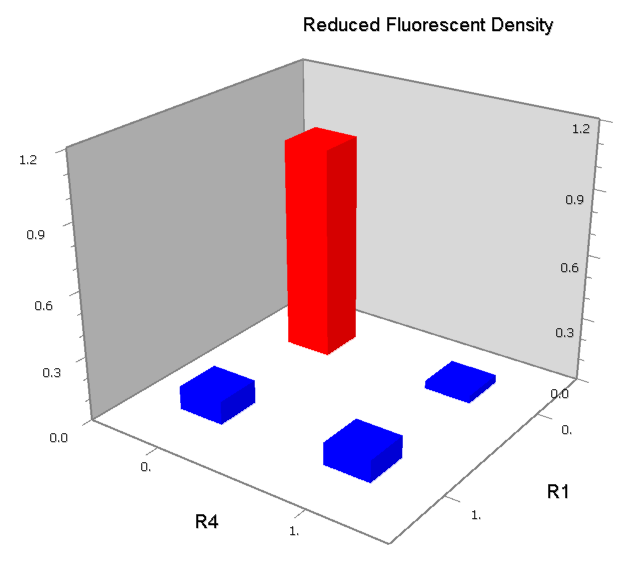USTC/Logic-Gate Promoters
From 2007.igem.org
Contents |
Cis-acting Bio-Logic Gates
In natural cells, combinational logic computation can be carried out by cis-acting elements []. Theoretically, dual repressors interacting on two adjacent operators can generate complex logic function as NAND, NOT and NOT []. But seldom of the parameters of these models have been measured, and practical artificial logic promoters are hard to made because of the lack of appropriate inputs. In this project, we simplify these models to reduce the number of parameters, use artificial high-specific repressors based-on Lac repressor as inputs, predict possible pattern of logic promoters, construct and test them experimentally, to attempt to find a systematical way to construct cis-acting bio-logic promoters. As the results, a piece of DNA about 60 – 200bp (2.0nm in width, 20-70nm in length, similar to transistors in present VSLI in size, sometimes smaller) is able to be built up and to act as a logic gate.
Model
Lacramioara Bintu et al. have reported a simple thermodynamic model which can quantitatively describe promoter activity under one or more repressors. This model focus on fold-change, the ratio of gene expression in the absence and presence of repressor. the fold-change can be expressed as <math>foldchange = p_{bound}(P, R) / p_{bound}(P, A = 0)</math>
polymerases available for binding to the promoter
Regulation factor – The effective change of the number of RNA
polymerases available for binding to the promoter, resulting from the action of transcription factors. The regulation factor is a function of transcription factor concentrations, operator distances, protein–DNA and protein–protein interactions. It is smaller than one for repression, and larger than one for activation. Fold-change – The ratio of gene expression (e.g. transcription rate) in the presence and absence of transcription factors. Within the thermodynamic model, this fold-change is given by the ratio of occupation probability of the promoter of interest by the RNA polymerase holoenzyme, in the presence and absence of transcription factors. For weak promoters that control the transcription of typical bacterial genes, the fold-change in gene expression is given approximately by the regulation factor.
Schemes of Bio-Logic Promoters
Repression Assay
Build Up Promoter Family
Firstly, we extend both sides of the conservative region for transcriptional initiation of PlacUV5[], including -35 box,-10 box and +1 starting point, with two non-sense sequence selected from random groups. The product is named as P_template1 as it is the template for the promoter family. These two non-sense sequence have three main characters:
- They will never include the restriction enzyme cutting sites that will be involved in the whole study;
- They will never include the recognition sites of RNA Polymerases and those of either of the two repressors;
- They will never present in complicated structures.
Secondly, another group of primers, of which the elongation region at 5’ end may contain a unique operator sequence or each, is applied at both ends of P_template1, equipping us with an according group of promoters with complete structures. These promoters can include variant operator sequences at different position in flank of the conservative region.
Then the promoter fragments are digested with XbaI and BamHI and cloned into repression-reporter plasmid, which contains lacZ alpha fragment and gfp under the promoter insertion site.
Solo-Repression Assay
Co-Repression Assay
Final Results
| File:USTC NestNOT.png Best NOT |
